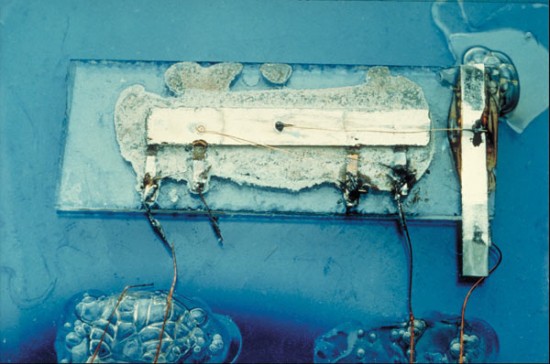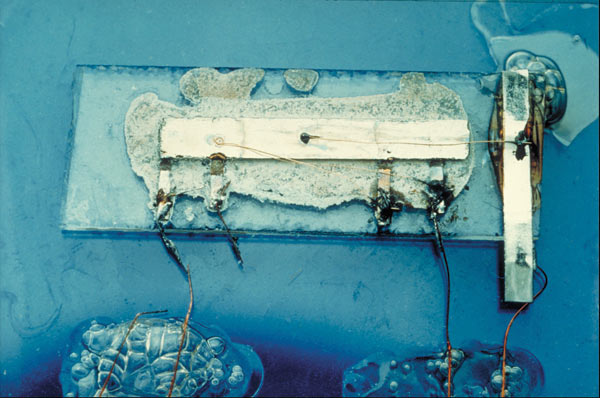Moore's Law
The computer chip has evolved from a simple integrated circuit to a microprocessor with millions of transistors.

The first working integrated circuit on germanium was demonstrated by Jack Kilby at Texas Instruments in 1958. This prototype has a transistor (small left dot) attached to two gold wires and a capacitor (middle black dot). The germanium itself, secured on a glass slide, is divided into three resistors by the tabs at the bottom. By showing that all three types of components could work in the same slice of germanium, Kilby offered a way to improve the performance and lower the cost of electronic devices.
